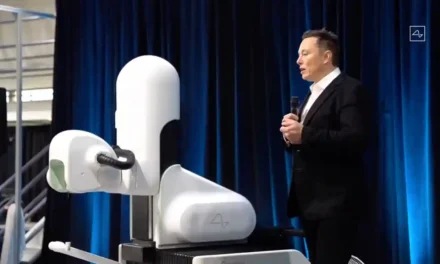OpenAI unveiled the latest iteration of its artificial intelligence (AI) technology, GPT-4, which has already astounded users with its ability to draft lawsuits, pass standardized exams, and build working websites from hand-drawn sketches. This advanced AI model has the potential to transform how we use the internet for work, play, and creativity while raising questions about the implications of such tools for professions, education, and our relationship with technology.
GPT-4, an updated version of OpenAI’s large language model, can generate intricate responses to user prompts thanks to its training on vast amounts of online data. The AI is already being integrated into third-party products such as Microsoft’s AI-powered Bing search engine, and some users with early access are showcasing its impressive use cases.
One significant change in GPT-4 is its ability to work with uploaded photos. For example, OpenAI demonstrated how a hand-drawn sketch could be transformed into a functional website within minutes using GPT-4. The AI was also able to explain a joke based on a series of images, which is a complex task for AI tools that require context. OpenAI plans to release the photo feature in the coming weeks.
GPT-4’s advanced language capabilities have also helped users with limited coding knowledge recreate iconic games or develop their own originals. The AI can write code in all major programming languages, according to OpenAI. Its potential applications span storyboarding, character creation, gaming content creation, marketing content, and even moderating gaming discussion boards.
The AI’s proficiency in coding could change how people develop apps, with users reporting the creation of simple drawing apps or movie recommendation apps in minutes. AI can be a valuable resource for teaching coding, according to Lian Jye Su, an analyst at ABI Research.
GPT-4 exhibits “human-level performance” on various professional and academic tests, including the LSAT, GRE, SATs, and many AP exams. OpenAI has used lessons from its testing program and ChatGPT to improve the system’s accuracy and ability to stay on topic.
Compared to its predecessor, GPT-4 can produce longer, more detailed, and more reliable written responses. The AI can now generate responses up to 25,000 words, tackling unique scenarios such as cleaning a piranha’s fish tank or extracting the DNA of a strawberry.
GPT-4’s potential to streamline work across industries is already being explored. Legal services chatbot DoNotPay is working on generating “one-click lawsuits” to sue robocallers, while dating site Keeper is using the AI to better match users.
Despite its advancements, GPT-4 has limitations similar to previous versions. It is unaware of events occurring before its data set cutoff, does not learn from experience, and can make reasoning errors. Users should exercise caution, particularly in high-stakes contexts.




